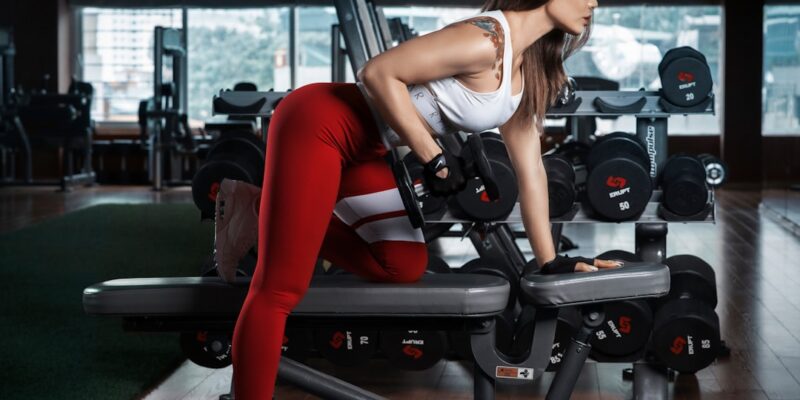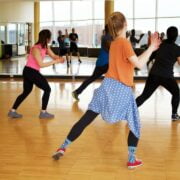
Revamp Your Fitness Routine: Diversify Your Workout with These Different Types of Exercises
Diversifying your workout routine is crucial for several reasons. First and foremost, it helps you avoid plateaus and boredom. Doing the same exercises over and over again can lead to a lack of progress and motivation. By incorporating a variety of exercises, you keep your body challenged and engaged, which leads to better results.
Additionally, diversifying your workout routine allows you to target different muscle groups and energy systems. Different exercises work different muscles, so by incorporating a variety of movements, you ensure that all areas of your body are being worked. Furthermore, different exercises require different energy systems, such as aerobic or anaerobic. By diversifying your workouts, you can improve your overall fitness level and performance in various activities.
Key Takeaways
- Diversifying your workout is important for overall fitness and preventing boredom.
- Cardiovascular exercises like running and cycling can boost heart rate and improve endurance.
- Strength training exercises like weightlifting and bodyweight exercises can build muscle and increase metabolism.
- Flexibility and mobility exercises like stretching and yoga can improve range of motion and prevent injury.
- Recovery and rest days are crucial for optimal performance and injury prevention.
Cardiovascular Exercises to Boost Your Heart Rate
Cardiovascular exercises are essential for improving heart health, burning calories, and increasing endurance. Running, cycling, and swimming are classic examples of cardiovascular exercises that can be done both indoors and outdoors. These activities elevate your heart rate and help improve cardiovascular fitness.
Jumping rope and high knees are also great cardiovascular exercises that can be done anywhere with minimal equipment. They are high-intensity movements that engage multiple muscle groups while increasing heart rate.
Rowing and stair climbing are excellent options for those looking for low-impact cardiovascular exercises. Rowing engages both the upper and lower body while providing a challenging cardiovascular workout. Stair climbing is a great way to target the lower body muscles while getting your heart rate up.
Strength Training Exercises for Building Muscle
Strength training is crucial for building muscle mass, increasing strength, and improving overall body composition. Squats, deadlifts, and lunges are compound exercises that target multiple muscle groups simultaneously. They are excellent for building lower body strength and stability.
Bench press, shoulder press, and pull-ups are compound exercises that primarily target the upper body muscles. These exercises are effective for building upper body strength and improving posture.
Bicep curls, tricep extensions, and calf raises are isolation exercises that target specific muscle groups. These exercises can be used to target smaller muscles or to add volume to your workout routine.
Flexibility and Mobility Exercises for Better Range of Motion
| Exercise | Description | Benefits |
|---|---|---|
| Static Stretching | Hold a stretch for a certain amount of time without movement | Improves flexibility and range of motion, reduces muscle tension and soreness |
| Dynamic Stretching | Moving through a range of motion repeatedly | Increases blood flow and body temperature, improves flexibility and mobility |
| Foam Rolling | Using a foam roller to apply pressure to muscles and fascia | Reduces muscle tension and soreness, improves flexibility and mobility |
| Yoga | A series of poses and stretches that focus on breathing and relaxation | Improves flexibility, balance, strength, and reduces stress and anxiety |
| Pilates | A series of exercises that focus on core strength, balance, and flexibility | Improves posture, balance, flexibility, and reduces back pain |
Flexibility and mobility exercises are essential for maintaining joint health, preventing injuries, and improving range of motion. Stretching and foam rolling are effective ways to increase flexibility and release tension in the muscles. These exercises can be done before or after a workout to improve mobility and reduce muscle soreness.
Yoga poses and Pilates movements are excellent for improving flexibility, balance, and core strength. These exercises focus on controlled movements and proper alignment, which can help improve overall body awareness.
Dynamic warm-ups and cool-downs are essential for preparing the body for exercise and aiding in recovery. These exercises involve moving the joints through a full range of motion to increase blood flow and warm up the muscles before a workout. They also help cool down the body after a workout, reducing muscle soreness and promoting recovery.
Yoga and Pilates for Mind-Body Connection
Yoga and Pilates not only provide physical benefits but also promote a mind-body connection. Mindfulness and meditation are key components of these practices, helping to reduce stress, improve focus, and enhance overall well-being.
Breathing techniques are an integral part of yoga and Pilates. Deep breathing helps calm the nervous system, reduce anxiety, and increase oxygen flow to the muscles. By incorporating proper breathing techniques into your workouts, you can enhance your performance and reduce the risk of injury.
Core strength and balance are also emphasized in yoga and Pilates. These practices focus on engaging the core muscles to improve stability and posture. By strengthening your core, you can improve your overall athletic performance and reduce the risk of back pain or injury.
High-Intensity Interval Training (HIIT) for Quick Results

High-Intensity Interval Training (HIIT) is a popular workout method that involves short bursts of intense exercise followed by periods of rest or lower-intensity exercise. HIIT workouts are known for their efficiency and ability to burn calories in a short amount of time.
Tabata and circuit training are common forms of HIIT workouts. Tabata involves performing an exercise at maximum intensity for 20 seconds, followed by 10 seconds of rest, repeated for a total of four minutes. Circuit training involves performing a series of exercises back-to-back with minimal rest in between.
Plyometrics and agility drills are often incorporated into HIIT workouts to improve power, speed, and coordination. These exercises involve explosive movements such as jumping, bounding, and lateral movements.
Sprints and burpees are classic HIIT exercises that can be done with minimal equipment. Sprints involve running at maximum speed for a short distance, followed by a period of rest or lower-intensity exercise. Burpees are a full-body exercise that combines a squat, push-up, and jump.
Outdoor Activities for Fresh Air and Scenery
Taking your workout outdoors can provide a refreshing change of scenery and allow you to connect with nature. Hiking and trail running are excellent outdoor activities that provide both physical and mental benefits. They challenge your cardiovascular system while allowing you to explore new trails and enjoy the beauty of nature.
Kayaking and paddleboarding are great options for those who enjoy being on the water. These activities engage the upper body muscles while providing a low-impact cardiovascular workout.
Beach volleyball and frisbee are fun outdoor activities that can be enjoyed with friends or family. They provide a full-body workout while promoting teamwork and social interaction.
Group Fitness Classes for Motivation and Accountability
Group fitness classes are a great way to stay motivated and accountable to your fitness goals. Zumba and dance fitness classes combine high-energy dance moves with cardiovascular exercise. They are fun and engaging, making it easier to stick to your workout routine.
Spin and cycling classes are popular options for those who enjoy indoor cycling. These classes provide a challenging cardiovascular workout while allowing you to control the intensity level.
Bootcamp and CrossFit classes are known for their high-intensity workouts that incorporate a variety of exercises. These classes often involve circuit training, strength training, and cardiovascular exercises, providing a full-body workout.
Sports and Recreational Activities for Fun and Fitness
Engaging in sports and recreational activities is a great way to stay active while having fun. Basketball and soccer are team sports that provide a cardiovascular workout while improving agility, coordination, and teamwork.
Tennis and golf are individual sports that require focus, precision, and technique. These sports engage the entire body while improving hand-eye coordination and balance.
Skiing and snowboarding are winter activities that provide a full-body workout while enjoying the outdoors. These activities engage the lower body muscles while improving balance and coordination.
Recovery and Rest Days for Optimal Performance and Injury Prevention
Recovery and rest days are just as important as exercise itself. Active recovery and mobility work, such as light stretching or foam rolling, can help reduce muscle soreness and improve flexibility.
Massage and foam rolling are effective ways to release tension in the muscles and promote recovery. Massage helps increase blood flow to the muscles, reducing muscle soreness and promoting relaxation.
Sleep is crucial for optimal performance and recovery. Aim for 7-9 hours of quality sleep each night to allow your body to repair and regenerate.
Nutrition plays a significant role in recovery. Fuel your body with nutritious foods that provide the necessary nutrients for muscle repair and growth.
In conclusion, diversifying your workout routine is essential for maximizing results, preventing plateaus, and avoiding boredom. By incorporating a variety of exercises and activities, you can target different muscle groups, energy systems, and improve overall fitness. Whether it’s cardiovascular exercises, strength training, flexibility and mobility work, yoga and Pilates, HIIT workouts, outdoor activities, group fitness classes, sports and recreational activities, or prioritizing recovery and rest days, there are endless options to keep your workouts exciting and effective. Experiment with different exercises and activities to find what works best for you and prioritize rest and recovery for long-term success.
FAQs
What are the different types of exercises?
There are four main types of exercises: aerobic, strength, flexibility, and balance.
What are aerobic exercises?
Aerobic exercises are activities that increase your heart rate and breathing, such as running, cycling, swimming, and dancing.
What are strength exercises?
Strength exercises are activities that build muscle and increase strength, such as weightlifting, push-ups, and squats.
What are flexibility exercises?
Flexibility exercises are activities that improve your range of motion and prevent injury, such as stretching, yoga, and Pilates.
What are balance exercises?
Balance exercises are activities that improve your balance and stability, such as standing on one leg, heel-to-toe walking, and yoga poses.
Why is it important to incorporate different types of exercises into your fitness routine?
Incorporating different types of exercises into your fitness routine helps to improve overall fitness, prevent injury, and avoid boredom. Each type of exercise provides unique benefits for the body and mind.















